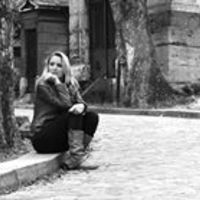
Elena Vaiani
- Paul Petau's collection of antiquities and manuscripts
- Cassiano dal Pozzo's Paper Museum: small antiquities
- Nicolas-Fabri de Peiresc's italian letters
- History of numismatics
- Studies, images and collections of antiquities in the XVII century
- Cassiano dal Pozzo's Paper Museum: small antiquities
- Nicolas-Fabri de Peiresc's italian letters
- History of numismatics
- Studies, images and collections of antiquities in the XVII century
less
Related Authors
Valeria Motta
EHESS-Ecole des hautes études en sciences sociales
Elisabetta Neri
Università degli Studi di Firenze (University of Florence)
Mª Ángeles Alonso-Alonso
Universidad Nacional de Educación a Distancia
Ségolène Darly
Universite Paris-8, France
Michael D Rosenfeld
Vrije Universiteit Brussel
Aurore Saint-André
Université Bordeaux-Montaigne
Elsa Roux
INRAP, Institut National de Recherches Archéologiques Préventives
Flavien BERTRAN de BALANDA
Ecole Pratique des Hautes Etudes
Charlotte Blein
E.H.E.S.S.
InterestsView All (30)









Uploads
Papers by Elena Vaiani
the highlights in the exploration of the culture and civilization of the country by the Nile. In 1822, Jean-François Champollion succeeded in deciphering the hieroglyphics, the hieratic and the demotic scripts, by working primarily with the Rosetta Stone. In 1922, the British archaeologist Howard Carter discovered the tomb of the Pharaoh Tutankhamun in the Valley of the Kings.
The academy research project “Antiquitatum Thesaurus” would like to contribute to the international discourse and, in three half-day digital workshops in the sum- mer semester of 2022 (5 May / 2 June / 7 July), draw attention to some central questions of the early-modern reception of Egypt, which preceded the events mentioned above.
The subject areas of the three workshops include:
- The protagonists: A consideration of the circulation of artefacts through interme- diaries, antiquarians and collectors as well as their reception and representation in drawings and printed works. Particular attention will be paid to how these figures were interconnected between c. 1600 and 1750.
- Multifaceted Egypt: How was the imagery or the idea of Pharaonic Egypt chan- ged or complemented by small-scale artefacts such as amulets, jewellery and funerary objects alongside the familiar monumental evidence such as obelisks or sphinxes?
- The history of reception: What was the basis for the depictions of the many aegyptiaca in the graphic volumes of the time: direct observation or copies based on earlier publications? How exactly did the exchange of drawings and prints, descriptions etc. take place among the members of the European république des lettres?
We plan 20-minute talks in German or English. We kindly ask you to send an abstract relating to the aforementioned topics – alternative proposals are also welcome – of maximum 500 words in German, English, Italian or French including a short CV to: thesaurus@bbaw.de by 11 March 2022. Please indicate the langua- ge in which you would like to speak. An answer will be given by 18 March 2022.